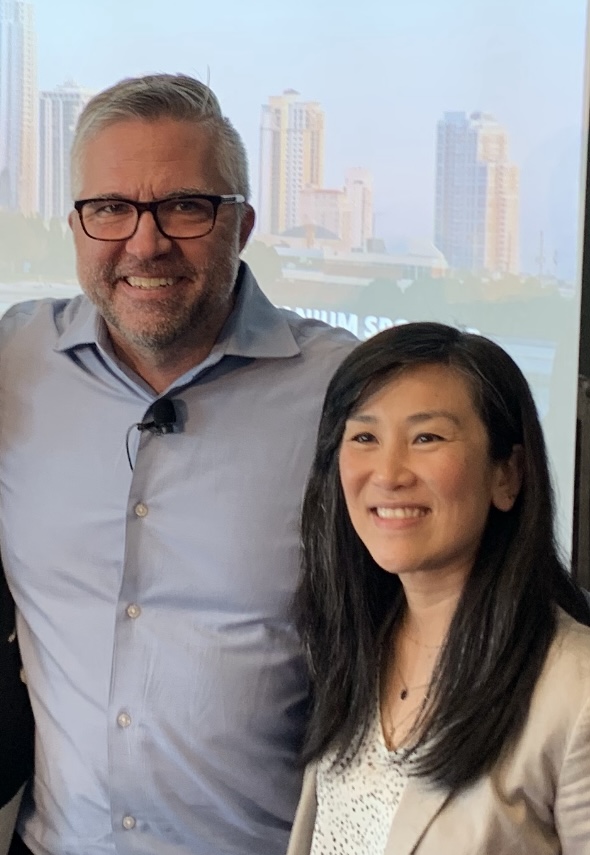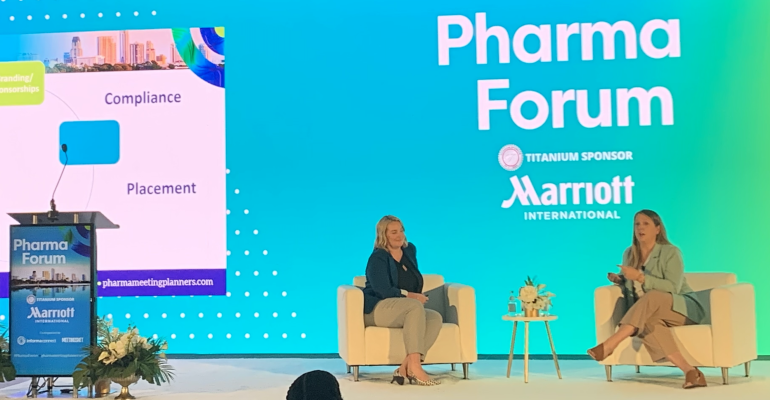During the 20th annual Pharma Forum conference held in Tampa from March 24 to 27, nearly 200 life-science event planners conversed, collaborated, and commiserated about the unique complexities involved in their work.
One topic that saw strong interest from attendees was developing an overarching congress strategy that meets several objectives for a participating life-science company. Linda Lee Pang, director of marketing operations for Gilead Sciences, led the discussion, noting that the range of company activities that often happen around a medical society’s congress—advisory boards and other ancillary meetings, plus symposia, product theaters, and booth activations—require a well-structured plan to ensure the total investment is worthwhile.
“Each division has its own objectives and key results (OKRs) for congress activity, but my team has to create overarching OKRs for a given congress,” she said. “So, there are some hard questions we must ask each division to determine who gets the most budget. From that, we figure out things like whether we need a massive booth this year or if holding a product-theater session is worth having a smaller booth. And because some congresses do not allow key opinion leaders or other third parties as speakers, that must be part of the calculation.”
One upside to having a diverse menu of activities at a congress is that ancillary events “will have no physician-travel costs, no per diems, and no carbon footprint to account for,” said Alaina Hill, HMCC, MMP, project manager for MGME and a veteran medical-congress organizer. “And if you can secure presenters from the congress to speak at your events, there is no transfer of value” to report.
Fighting the Compressed Time Frame One complication that company planners deal with around congress activity is that their coworkers in various divisions often develop their OKRs and determine the best way to achieve them roughly four to six weeks out from a congress. “Yes, things change so much that planning six months out probably won’t work,” noted Pang from Gilead (in photo with co-presenter Chris Metzger). “But a brand-planning brief that starts the conversation around the events you’ll want at a congress” is good to have a few months out. One reason of many: “You’ll need contingency plans for some activities; for instance, what if a product’s launch date is pushed back?”
One complication that company planners deal with around congress activity is that their coworkers in various divisions often develop their OKRs and determine the best way to achieve them roughly four to six weeks out from a congress. “Yes, things change so much that planning six months out probably won’t work,” noted Pang from Gilead (in photo with co-presenter Chris Metzger). “But a brand-planning brief that starts the conversation around the events you’ll want at a congress” is good to have a few months out. One reason of many: “You’ll need contingency plans for some activities; for instance, what if a product’s launch date is pushed back?”
Deana Haines, senior program manager for BCD M&E and a longtime medical-society congress planner, offered another contingency-planning scenario: “A company’s room block and meeting space could get moved to another hotel a few weeks out from the start date because the organizer is trying to put the whole event puzzle together to avoid attrition at each property.”
For smaller life-science firms that find themselves with an undesirable meeting-space situation—or none at all—Haines noted that it might be possible to rent space from a larger company that has secured a lot of space in a given property. “Many of the big firms overbook space in case they have impromptu meetings; they don’t want to have any conversations in the lobby,” she said.
One ancillary-meeting tactic life-science companies should not consider: holding an event during a blackout period imposed by the congress organizer. “Competitors will almost certainly find out and bring it to our attention,” Haines added. “Then your company will lose a ton of priority points on preferred hotels and meeting space for future congresses, and the society could also fine you.”
Tracking Congress Results
Chris Metzger, vice president of program strategy for Czarnowski Collective, offered key metrics that life-science companies should apply to their congress activities. A few primary ones: How many attendees did the booth draw? How many one-on-one meetings took place? What was the average kiosk or screen time per attendee in the booth?
That last measurement is useful for gauging the firm’s return on objective. “If a company’s OKR is for physicians to learn x, y, and z about the product, we can analyze their screen time to determine not only what they learned but also what they want to learn more about,” Metzger said. One other congress metric that should be measured is how many HCPs attended the firm’s product-theater sessions.
To get even more granular, Metzger suggested collecting HCPs’ practice type/therapeutic area, years of practice, geographic location, and demographics. But while it would be useful to collect physicians’ NPI [National Provider Identifier] numbers, Metzger called it a “controversial practice” while pointing out that nurse practitioners do not have such numbers, which diminishes the analytical benefit of collecting that information.
One other interesting congress-related activation for life-science firms, said Metzger, is to run digital ads at the host destination’s airport. An ad can present a compelling message that pushes viewers to capture the accompanying QR code, which would allow the firm to measure the number of engagements versus mere impressions.

Alaina Hill, HMCC, MMP, project manager for MGME, looks on as Deana Haines, senior program manager for BCD M&E, addresses the Pharma Forum audience.
Develop a Winning Congress Strategy
Life-science company planners and medical-society planners reveal the critical issues they contend with when working on companies’ congress participation.
0 comments
Hide comments




